Buy 3 Top Price Action Signals – J. Crawford Course at GBesy. We actively participate in Groupbuys and are committed to sharing knowledge with a wider audience. Rest assured, the quality of our courses matches that of the original sale page. If you prefer, you can also buy directly from the sale page at the full price (the SALEPAGE link is directly provided in the post).
Salepage link: At HERE. Archive:
$127 $38 – 3 Top Price Action Signals – J. Crawford
Introduction: It is important to start this report by being clear that these signals and tactics for using Price Action are meant to compliment a trading plan or strategy. That’s not to say that there are not people making livings just studying candlesticks and price action? however, I have found that a larger view and understanding of the market is crucial for my own success. Price action plays a large role within that overall approach, but I do not suggest following any candlestick signal blindly. These candle formations and patterns can literally be applied to any time frame and any market because they are universal patterns with real meaning rather than a backtested pattern. That said, my focus is using these patterns on 5, 15,30 and 60 minute charts and my personal main focus is within the currency market. For those of you reading this report trading other markets, I hope you will provide your feedback and experience in those markets besides the Forex.
Signal 1: Tailing Tops As the name suggests, this method has to do with what’s commonly referred to as “topping action” where the market begins to create “wicks” or “tails” after a fast move in the upward direction.
This is Topping Action:

This is a tell tale sign that the market is being rejected at whatever price these wicks are shooting through. Especially when there is a considerable “run up” (many bullish candles) prior to the topping action.
A strong bullish run followed by wicks means that the market had no trouble moving higher but was suddenly rejected in this area. That tells us that this particular area has some authority as it’s pushing down a strong bullish run.
“Here is what is important to understand, and what most traders fail to realize:
Just because you have correctly analyzed that price is being reject, does NOT necessarily mean it is going to move significantly in the opposite direction. It may or it may not. The rejection is only one piece of the puzzle—just one piece of evidence.
That’s why, when you learn these strategies where the entire method is to short every pin bar or buy every tail bar, you can be assured that they will not work with any type of consistency.
Sometimes the market will run up to a pin bar and do this:

This is where price ran into a stone wall and was completely rejected in the opposite direction; the pin bar, in this case, was a signal that price had no more bullish momentum left and was ready to average back out by moving down quickly.
It’s examples just like this that the “Pin Bar Specialists” will point to when teaching you a basic pin bar strategy. And while I agree that this candlestick can be a great indication of a potential reversal (which is why I am writing this report), it is certainly–and unfortunately–not this simple.
What the Pin Bar experts aren’t showing you are these examples:

Topping action can be a great signal IF it is paired with other information; however, the idea that you should hit the “SELL” button any time you see a pin bar is a very limited approach to trading that won’t likely return consistent results. For instance, if the market is in a downtrend and it rallies to a resistance zone and shows topping action, that can be a great opportunity to jump on this signal.
Here, you can see a bearish trend with some aggressive bullish movement. The strong bullish run begins to Top Out at a key level of resistance. In this case, we aren’t just seeing a pin bar; instead we are identifying market rejection at a critical level. And indeed, the price moved down as it respected a strong level of resistance.
A steep pullback in the opposite direction of the trend is an instant sign that there could be an opportunity on the horizon. When you pair that with this topping action right at a key resistance level, THEN you have a trade worth taking.
So, it is not that the topping action is a trading strategy in itself, but a powerful Price Action signal that can be paired with analysis and within a strategy to give you an edge in your trading.
“Note: “Tailing Action” is the exact opposite of topping and can be used in the same way. When the market is in an uptrend and reverses into an area of support with tailing action, it acts as a buy signal.
Signal 2: The Engulfing Candlestick

An “engulfing” candlestick is a candle that completely covers and erases its previous candle as shown in the image above.
In this example, the Green bullish candle is the “Engulfing Candlestick” because it completely erases the previous candle and negates the movement that happened in the previous time segment (whether it be 5M, 15M, 60M, 4HR, D1, etc)
Two Key Requirements for Engulfing Candlesticks:
Rule #1
When we talk about an engulfing bar pattern, the rule is that the first candle—the one being engulfed—is a healthy sized candle. In other words, if a very small bearish candle forms and then a small, but slightly larger, bullish candle forms that technically “engulfs” the tiny candle we do not care. These small candles wouldn’t require a ton of money to create them and, therefore, we don’t note it as an important move.
The importance of the Engulfing Pattern is that it would require substantial money to make the moves that have occurred. In other words, it is not by accident that the market suddenly reversed on a dime. The forex market, specifically, takes BILLIONS of dollars of volume to turn the market around in short order like you see above. It’s when a strong bearish candle is instantly rejected and erased or vice versa that we pay attention to this signal.
Rule #2
The other rule is that the pattern to create the engulfing bar should be created with full-bodied candles. A candle that is made up of a wick and covered up doesn’t show the type power we want to see in this pattern. A wick or tail signifies that the market is already back and forth. That it has already shown signs of popping up and falling back down again quickly; so a candle going in the opposite direction of whichever direction the “wicky” candle happened to close has much less impact than a large, full-bodied candle (typically indicating momentum in that direction) being instantly reversed upon and erased by an even larger full-bodied candle.
This pattern indicates a reversal in direction of substantial size. The idea is that it would require banks, hedge funds and/or other institutions putting their money to work in order to create this type of immediate “turn on a dime” kind of reversal; therefore, it indicates a higher likelihood that the new movement will be sustained.
Again, this price action pattern on its own will not likely be a profitable trading strategy. When you combine the Engulfing Candlestick with other elements, however, it can be a powerful piece of evidence as to where the market is going.
Fibonacci with Engulfing Candle:

A move”Back into the River” (20,40 simple moving average trend)

These are just two examples of how to combine an engulfing candlestick with other information to improve your accuracy and highlight large opportunities-especially within trending market conditions.
Again, this pattern can be found in any market on any time frame. We typically like to see this on at least a 15M chart (even more preferably on 60M and higher) because it improves the likelihood that institutional money was involved in the change of direction.
The Engulfing Candle can be a perfect bonus to any strategy. Some of our traders use this signal as a final piece of evidence for reversal entries while others take advantage in exactly the opposite way and utilize the Engulfing Candlestick as a trend continuation signal.
At the end of the day, the candlestick pattern is only one piece of the puzzle. As you understand how these engulfing candles work within the market as a whole (which comes through practice) it can be a powerful aid in your strategy.
Signal 3: Bear/Bull Flag
A “Flag” is a common pattern that most analysts use. However, identifying a flag and trading a flag effectively can be two very different things.
Before we discuss how to trade a flag effectively, let’s define it:
A “flag” is a channel type movement with at least two top levels and two bottom levels that moves in the opposite direction of the previous movement.
So a bull flag looks like this:

(You can see where the “Flag” gets its name)
And a bear flag looks like this:

Again, the key things we are looking for here are:
- 1. A strong impulse (fast/momentum type move) in a clear direction? and
- 2. A slower, more consistent retracement in the form of a countertrend channel? and
- 3. At least two tops and two bottoms that can be used to define the flag
So what does a flag mean?
In theory, a flag is a continuation signal.
It signifies that there is a likelihood that after the consolidation, the market will continue to go in the direction of the impulse prior to the flag movement. The idea is that the strong impulse prior to the “flagging” consolidation is the true momentum in the market, and that this lazy movement is simply the market resting and bouncing back and forth to collect more orders so that it can continue with the “true” impulse of the market. And this does work out many times.
But, like most things in trading, trading a flag is not as easy at it sounds.
There are tons of educators who suggest that trading a pattern is an entire strategy on its own. I’ve personally never found the market to be that simple, so let me continue with my overall trend in this report and tell you that I do not believe you should trade these signals by themselves.
Here are the 3 reasons that I do not recommend following flag patterns blindly:
- 1. They don’t always continue in the prior direction
- 2. Even if they do continue, you might get a fake out first
- 3. You never know when the consolidation is going to end
Because of those three aspects, it is very easy to get tricked into jumping in the wrong direction altogether, or simply pulling the trigger too early and getting taken out just to watch it continue as you suspected.
So how do you trade these patterns effectively?
Like I have continually said throughout the report, you must use this pattern as an element to a larger approach to the market. The most effective way to do this is to take into account two key aspects that will aid the accuracy and legitimacy of a flag pattern.
KEY #1
Understand the trend beyond just the most recent impulse. It’s easy to see a sharp bearish move followed by a pretty flag and immediately jump on the first that looks like it could be a break to the downside. But, if you know the overall trend is actually bullish, then you will know the sharp movement might just be a squeeze or sharp retracement and the “Flag” may just be a slow start to a new Bullish leg. And, of course, if that is the case you certainly wouldn’t want to be selling it.
The rule of thumb is to go to at least two time frames above the one you are looking at. So, if you see a flag pattern on a 15m chart, you should go do thorough analysis of the 30m and 60m chart so you know where the overall momentum and trend is really heading and you don’t get sucked Into a bad trade.
This is one of the most common mistakes I see in retail traders. I call It getting “stuck” on a timeframe. And part of the problem is that many trading educators teach you a strategy for a specific timeframe. In reality, trading a timeframe doesn’t make a whole lot of sense-after all, timeframes are just arbitrary units of time to break off candles and start printing a new one. You need to trade the market, not a timeframe. And understanding the trends in the surrounding timeframes is a great first step to a larger and more accurate understanding of trading the market and not getting sucked into a 15M pattern that is not supported by the overall market direction.
By knowing what is going on with the other time frames, you will have a MUCH more educated view of what is happening on your 15m chart and you’ll be able to filter out bad trades. When the trends do line up, you’ll be able to execute trades with confidence and a much higher probability.
KEY #2
Knowing where the key levels are above or below the flag pattern you are looking at. For instance, If you spot a Bull Flag and you know the trend is bullish, you may be ready to take a BUY trade. But, you also need to know where the next key level of resistance is above the flag.
This is a simple thing that almost all amateur traders mess up. They see a great pattern, execute a long at the break, the trade goes in their favor for a few pips and then suddenly reverses. They can’t understand what went wrong…
Often, it’s that they didn’t realize the market was coming into a significant zone that price was likely to bounce off. This is a critical element to trading continuation patterns that most traders overlook.
The next page shows a hypothetical example of this situation that is extremely common amongst traders who attempt to utilize the flag or any other continuation method without first being aware of possible rejection zones.
(Arrows pointing out prior rejection at the yellow level and forecasting break of flag)

When setting up a buy trade on the break of a Bull Flag, you should first scour the market for key levels of Support and Resistance. Then, you should place your target BELOW the closest level so that the market has the highest probability of taking you out with profit.
This way, you are playing by the market’s rules. Most often, when the market breaks a level (like a bull flag, for instance), it is heading to the next level. By identifying that level and using it as a target, you are making it easy on the market to get you out of the trade with a profit.
When you use the market’s own levels and place your TP there, your profit target can be a magnet for price instead of being very difficult to hit.
By understanding these two keys: which direction the trend is heading AND what key level it might touch on next, trading the flag continuation becomes a much more effective signal.
$127 $38 – 3 Top Price Action Signals – J. Crawford
Buy the 3 Top Price Action Signals – J. Crawford course at the best price at GBesy.. After your purchase, you will get access to the downloads page. You can download all the files associated in your order at here and we will also send a download notification email via your mail.
Unlock your full potential with 3 Top Price Action Signals – J. Crawford courses. our courses are designed to help you excel.
Why wait? Take the first step towards greatness by purchasing 3 Top Price Action Signals – J. Crawford courses today. We offer a seamless and secure purchasing experience, ensuring your peace of mind. With our trusted payment gateways, Stripe and PayPal, you can confidently complete your transaction knowing that your financial information is protected.
Stripe, known for its robust security measures, provides a safe and reliable payment process. With its encrypted technology, your sensitive data remains confidential throughout the transaction. Rest assured that your purchase is protected.
PayPal, a globally recognized payment platform, offers an additional layer of security. With its buyer protection program, you can feel confident in your purchase. PayPal ensures that your financial details are safeguarded, allowing you to focus on your learning journey.
Is it secure? to Use of?
- Your identity is completely confidential. We do not share your information with anyone. So it is absolutely safe to buy the 3 Top Price Action Signals – J. Crawford course.
- 100% Safe Checkout Privateness coverage
- Communication and encryption of sensitive knowledge
- All card numbers are encrypted using AES at relaxation-256 and transmitting card numbers runs in a separate internet hosting atmosphere, and doesn’t share or save any data.
How can this course be delivered?
- After your successful payment this “3 Top Price Action Signals – J. Crawford course”, Most of the products will come to you immediately. But for some products were posted for offer. Please wait for our response, it might take a few hours due to the time zone difference.
- If this happens, please wait. The technical department will process the link shortly after. You will receive notifications directly by e-mail. We appreciate your wait.
What Shipping Methods Are Available?
- You will receive a download link in the invoice or YOUR ACCOUNT.
- The course link always exists. use your account to login and download the 3 Top Price Action Signals – J. Crawford course whenever you need.
- You only need to visit a single link, and you can get all the 3 Top Price Action Signals – J. Crawford course content at once.
- You can do your learning online. You can be downloaded for better results and can study anywhere on any device. Make sure your system does not sleep during the download.
How Do I Track Order?
- We always notice the status of your order immediately after your payment. After 7 days if there is no download link, the system will automatically complete your money.
- We love to hear from you. Please don’t hesitate to email us with any comments, questions and suggestions.
![GBesy [GB] GBesy [GB]](https://www.gbesy.com/wp-content/uploads/2023/05/gbesy-Logo-full-100.png)
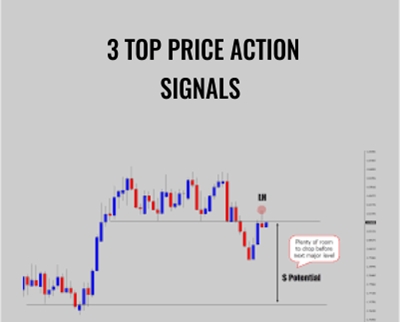
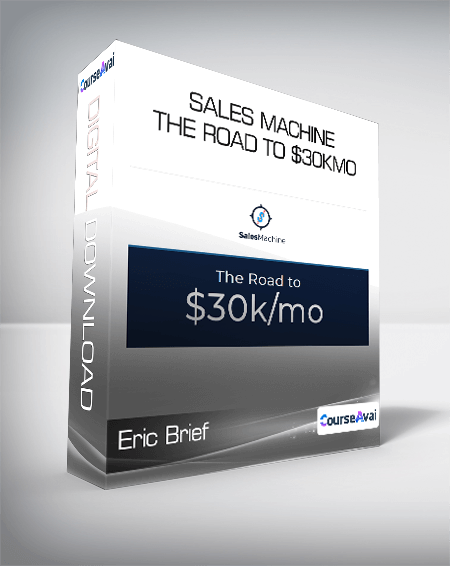

 Purchase this course you will earn
Purchase this course you will earn 
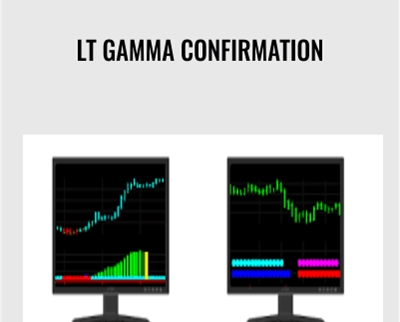
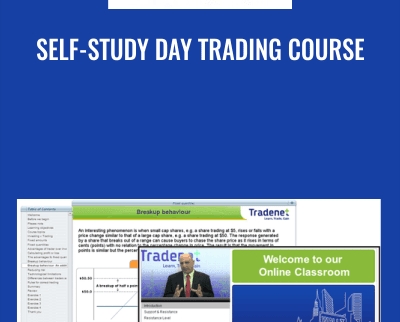

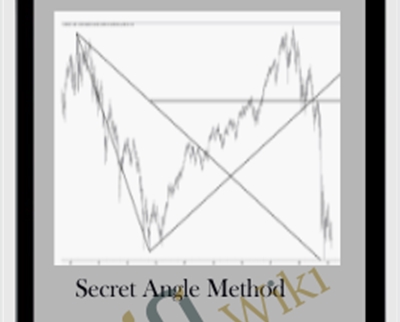
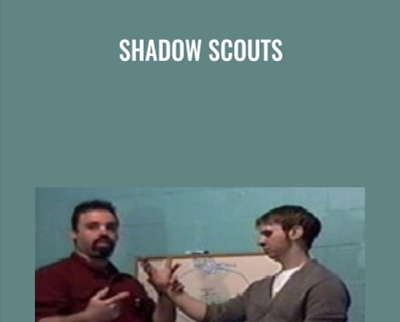
Reviews
There are no reviews yet.